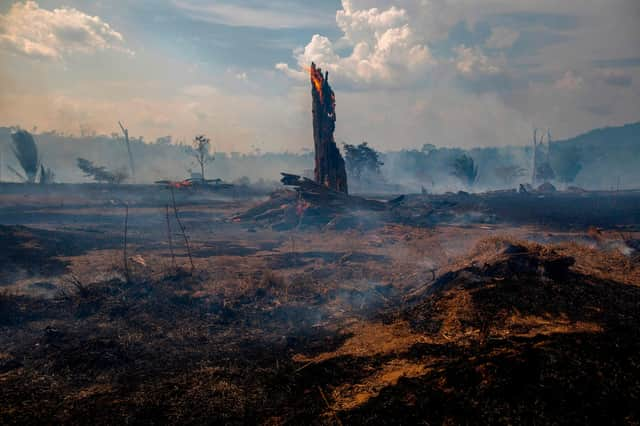World on fire: Climate change has dramatically increased the threat from wildfires all over the world – Scotsman comment


It is estimated that about 4.5 million square kilometres of land – equivalent to 18 United Kingdoms – burns each year as a result of natural processes, like a lightning strike, or human actions.
While attributing individual fires to climate change can be difficult, it is a fact that hotter, drier conditions mean there is a greater chance of a spark catching alight and more dry vegetation to fuel the blaze.
Advertisement
Hide AdAdvertisement
Hide AdScientific studies have shown wildfires are becoming more common.
For example, research into fires in the Rocky Mountains found the rate of burning for the 21st century was nearly double the average for the last 2,000 years.
In total across the US, more than 3.5 million acres of land had burned as of August this year, a million more than at the same point during the record-breaking 2020 fire season.
Meanwhile Turkey has seen wildfires that its president described as the “the worst in its history”, with the area of land burned more than eight times the average. In Greece, 12 times as much land has been consumed as usual.
In Siberia, the average area of burned land from 2011 to 2020 was more than double the previous decade’s average, according to the Sukachev Forest Institute.
Satellites registered 28,060 fires in the Brazilian Amazon rainforest in August alone, just four per cent down on the same month in 2020 when fires were probably the worst in ten years.
While attracting little global attention, fires in sub-Saharan Africa are estimated to consume about 70 per cent of the world’s burned land.
All this puts vast amounts of carbon into the atmosphere, but when the forests regrow they can absorb a similar amount.
Advertisement
Hide AdAdvertisement
Hide AdHowever, in places, such as Australia and Siberia, fires have become so regular that they threaten to turn some forests into scrubland. In others, such as the Amazon, humans are clearing forests by fire to make way for agriculture.
The world is looking to plant vast numbers of trees to help avoid dangerous climate change. But with so many going up in flames, it may prove a forlorn hope.
A message from the Editor:
Thank you for reading this article. We're more reliant on your support than ever as the shift in consumer habits brought about by coronavirus impacts our advertisers.
If you haven't already, please consider supporting our trusted, fact-checked journalism by taking out a digital subscription.
Comments
Want to join the conversation? Please or to comment on this article.
